Weather Update, iPhone Moon, Jupiter
Posted: 17 January 2024
Rain (0.02") began late Wednesday night, 3 January 2024. Before sunrise Thursday morning, 4 January, there were some patches of snow. Rain accumulation on Thursday was 0.29". Saturday evening, 6 January, there was a pretty sunset.

Had some snow Sunday afternoon, 7 January. About sunrise Monday morning, 8 January, I measured the snow accumulation as 1" with the temperature 23°F.
Click to view video
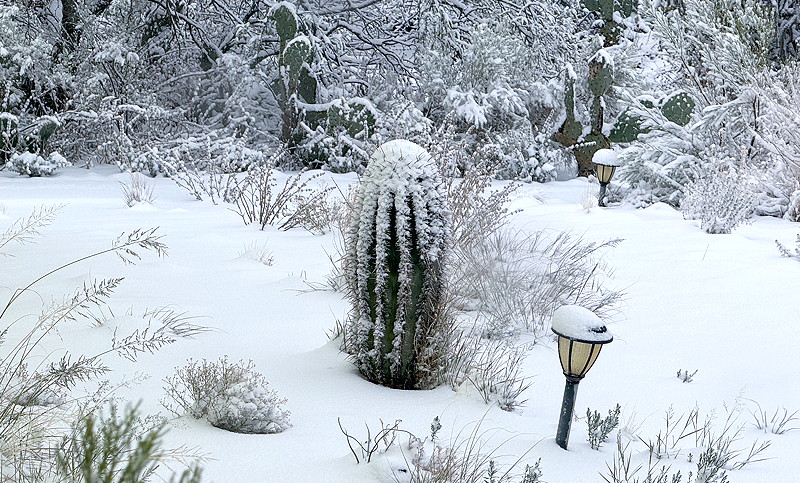
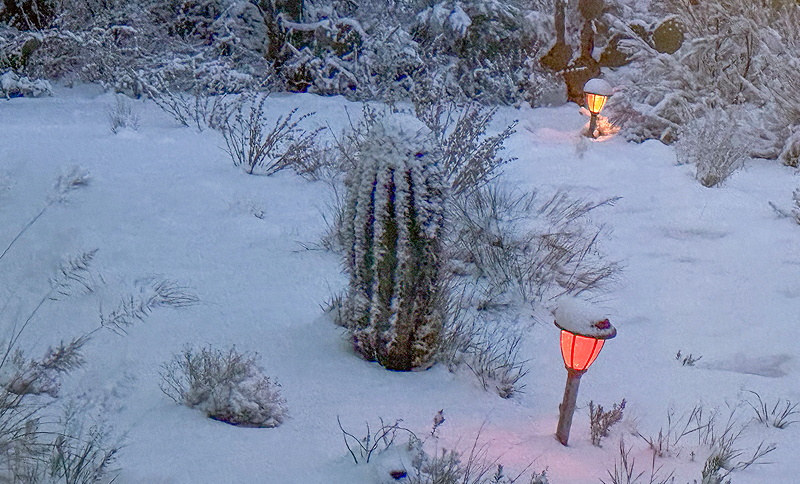
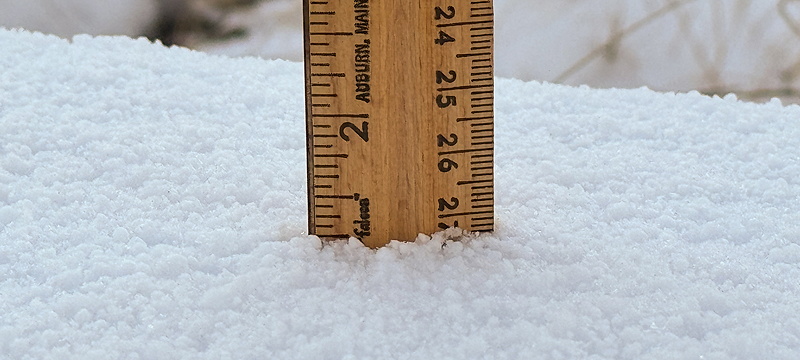
The sky was clear on Monday, 8 January, but I did not open the observatory due to the very low temperature. During the daytime the temperature did not get much above freezing. One hour after sunset it was down to 29°F. And the path to the observatory was covered by ice. Yes, I know, I wimped out. Must be getting old.
Thursday, 11 January, had 2-4" of snow predicted for Oracle along with 50 MPH wind gusts, making for near blizzard conditions here. However, while it was very windy, very little rain fell (0.05") with only a few snowflakes. Friday afternoon, 12 January, with some clear nights in the forecasts, I removed the Dome Cover that I had put ON on 19 December. I had planned to open the observatory that night, but clouds raced in about sunset.
Tuesday morning, 16 January, there was a large family of Javelina getting water from birdbaths and some bird seed.
Click to view video
The sky was mostly clear on Tuesday, 16 January, so I opened the observatory.
|
Open: Tuesday, 16 January 2024, 1812 MST Temperature: 66°F |
Session: 1935 Conditions: Mostly clear |
Equipment:
12" f/8 LX600 w/StarLock
2" 24mm UWA eyepiece
2" 30mm eyepiece
2" 9mm 100° eyepiece
Camera:
iPhone 15 Pro Max
First, I SYNCed the observatory clock to WWV time signals.
1818 MST: LX600 ON, StarLock OFF, High Precision OFF.
Viewed the Moon, 102X and 81X.
This iPhone 15 Pro Max photo taken with the Camera app (Night Mode, 3 seconds, 1X lens) shows the telescope pointed at the Moon.
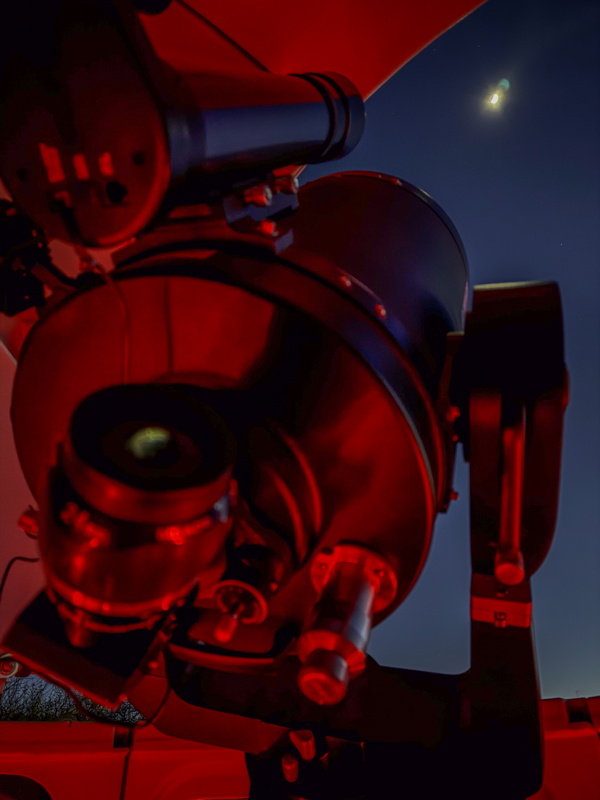
I then attached the LiDAR Cover to the iPhone 15 Pro Max and mounted the iPhone on the 2" 30mm eyepiece using the Accuview 3-Axis Smartphone Adapter.
The Moon, afocal 81X, NightCap Camera (ISO 55, 1/850sec, 1X lens).
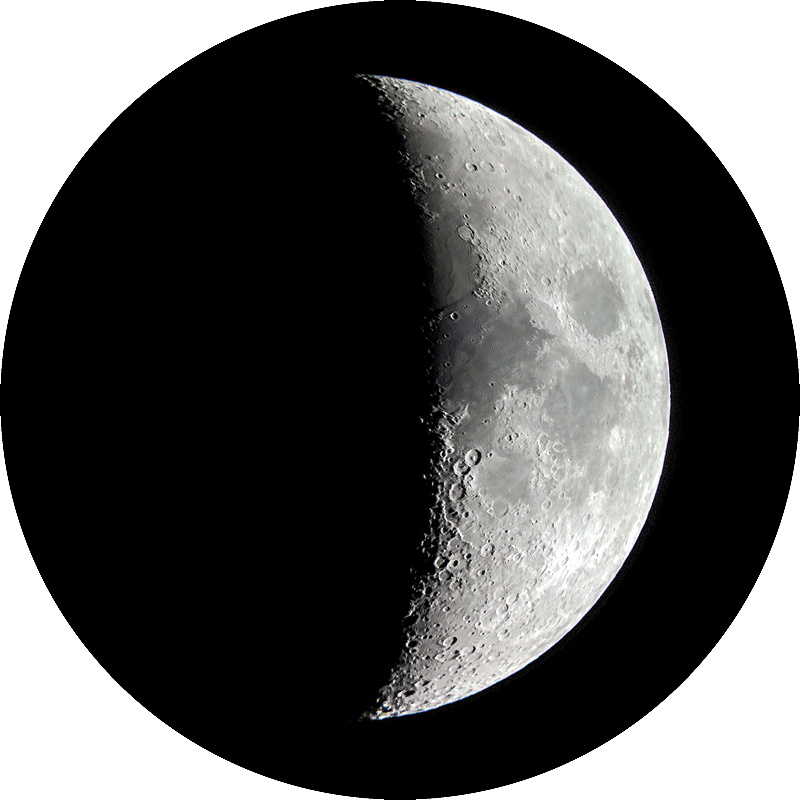
Next, I did some lunar observing, 271X.
I mounted the iPhone with the LiDAR Cover on the 2" 9mm 100° eyepiece using the 3-Axis Adapter. Took these images of the Moon, afocal 271X, using NightCap Camera (ISO 250, 1/60sec, 1/120sec, 1/60sec, respectively, 1X lens).
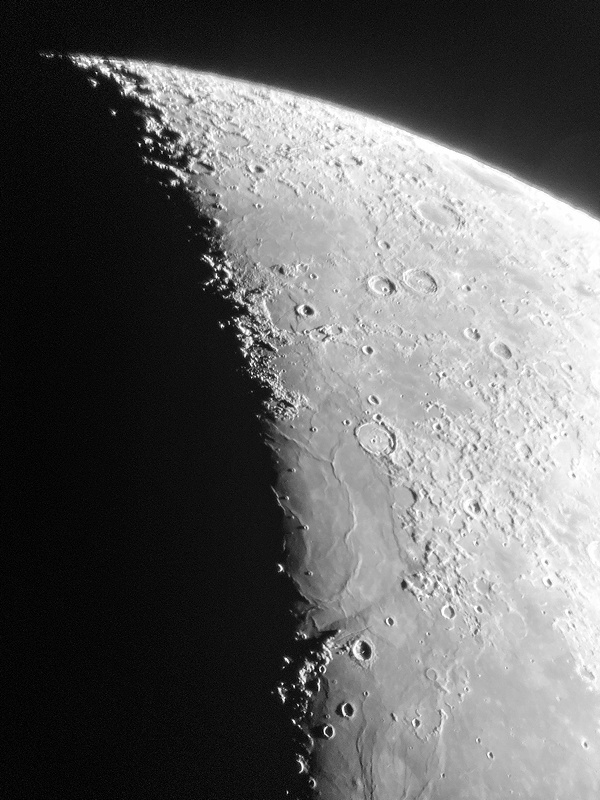
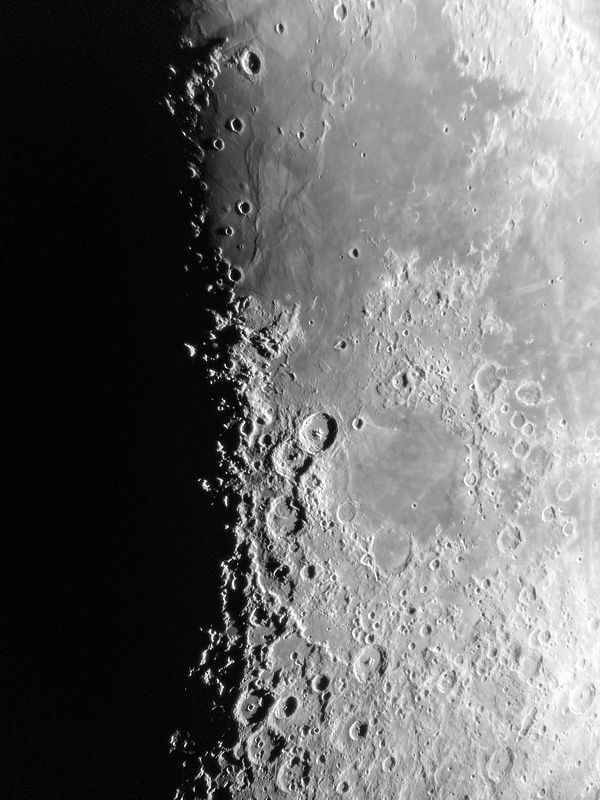

After imaging the Moon, I viewed the planet Saturn, low in the western sky, 102X and 271X. The Ring System is nearly edge-on now.
I then viewed Jupiter, 271X. The Great Red Spot, now more a "Small Pale Pink Spot", was barely visible.
I mounted the iPhone with the LiDAR Cover on the 2" 9mm 100° eyepiece using the 3-Axis Adapter. Took this single-frame image of Jupiter, afocal 271X, using NightCap Camera (ISO 1000, 1/60sec, 1X lens). Three of the Galilean Moons are visible in the image.

I did a slo-video (240 fps, 10 seconds) video recording of Jupiter, afocal 271X, using the Camera app (1X lens). This is a stack of 2109 video frames. The Great Red Spot is about 8 o'clock on the planet's disk.
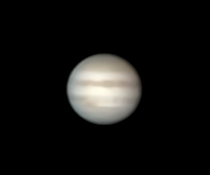
Last, I viewed the Great Nebula in Orion (M42), 102X. The nebula was nice even with the bright Moon in the sky.
1916 MST: LX600 OFF.
It was wonderful to be back in the observatory after almost a month.
|
Close: Tuesday, 16 January 2024, 1926 MST Temperature: 52°F |
Session Length: 1h 14m Conditions: Clear |
Comments are welcome using Email. Please read the Email Etiquette guidance.
Cassiopeia Observatory Home Page
Copyright ©2024 Michael L. Weasner / mweasner@mac.com.
URL = http://www.weasner.com/co/Reports/2024/01/17/index.html
